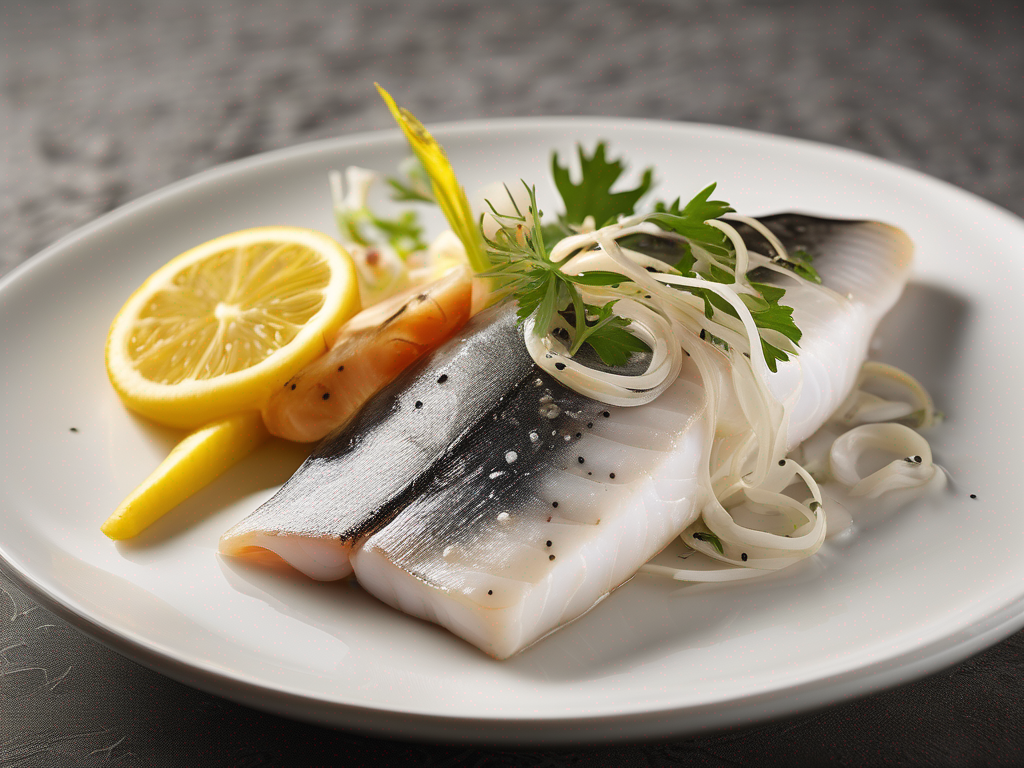
Is Your Atlantic Pollock Safe to Eat?
Get Your Free Food Safety Cheat Sheet
30 most common foods with instant answers. Print it and stick it on your fridge—completely free!
Is Your Atlantic Pollock Safe to Eat?
Atlantic Pollock is a popular and versatile fish that can be used in a variety of dishes. However, like all seafood, it is important to ensure that your Atlantic Pollock is fresh and safe to eat. In this blog post, we will discuss how to tell if your Atlantic Pollock has gone bad and provide you with practical tips on food safety. (Atlantic pollock)
Signs of Spoiled Atlantic Pollock
It is crucial to be able to identify the signs of spoiled Atlantic Pollock to avoid foodborne illnesses. Here are some indicators that your fish may have gone bad:
Visual Signs
- Discoloration: If the flesh of the Atlantic Pollock has turned a grayish or yellowish color, it is likely spoiled.
- Sliminess: Fresh fish should have a clean and smooth texture. If the flesh feels slimy to the touch, it is a sign of spoilage.
- Foul Odor: Spoiled fish will have a strong, unpleasant odor that is often described as fishy or ammonia-like.
Texture and Appearance
- Dryness: If the fish appears dry and flaky, it may be past its prime.
- Mold: Any presence of mold on the fish indicates spoilage and should be discarded immediately.
Proper Storage Practices
To extend the shelf life of your Atlantic Pollock and ensure its freshness, it is essential to follow proper storage practices:
Refrigeration
- Temperature: Store Atlantic Pollock in the refrigerator at a temperature of 32°F to 38°F (0°C to 3°C).
- Packaging: Keep the fish in its original packaging or wrap it tightly in plastic wrap to prevent exposure to air.
- Use-by Date: Consume the fish before the expiration date on the packaging.
Freezing
- Freezing: If you are not planning to use the fish immediately, freeze it in an airtight container or freezer bag.
- Labeling: Label the container with the date of freezing to track its freshness.
- Thawing: Thaw frozen Atlantic Pollock in the refrigerator overnight or under cold running water.
Handling and Preparation Tips
Proper handling and preparation of Atlantic Pollock are essential to prevent contamination and ensure food safety:
Washing
- Rinsing: Rinse the fish under cold water before cooking to remove any residual scales or debris.
- Pat Dry: Pat the fish dry with paper towels to remove excess moisture.
Cooking
- Temperature: Cook the fish to an internal temperature of 145°F (63°C) to kill any harmful bacteria.
- Serving: Serve cooked Atlantic Pollock immediately and refrigerate any leftovers promptly.
Conclusion
In conclusion, it is important to be vigilant when it comes to the freshness and safety of your Atlantic Pollock. By being aware of the signs of spoilage, following proper storage practices, and handling the fish correctly, you can enjoy this delicious seafood without any worries. Remember, when in doubt, it is always better to err on the side of caution and discard any fish that shows signs of spoilage. By prioritizing food safety, you can savor the flavors of Atlantic Pollock with peace of mind.
Authoritative Food Safety References
These agencies and university labs inform every tip and health precaution we publish.
USDA FoodKeeper – Cold Storage Guidelines
Official refrigerator, freezer, and pantry timelines maintained by the U.S. Department of Agriculture.
Visit USDA FoodKeeperFDA Produce Safety Rule & Grower Guidance
Field-to-fridge handling practices that prevent contamination of fruits, vegetables, and leafy greens.
Visit FDA Produce SafetyCDC Foodborne Illness Prevention Hub
Surveillance-backed guidance on pathogens, symptoms, and steps to reduce foodborne illness risk.
Visit CDC Food SafetyUC Davis Postharvest Technology Center
University research detailing optimal storage atmospheres for produce after harvest.
Visit UC Davis PostharvestPenn State Extension – Home Food Preservation & Safety
Peer-reviewed extension bulletins on safe canning, chilling, and reheating practices.
Visit Penn State ExtensionGet Your Free Food Safety Cheat Sheet
30 most common foods with instant answers. Print it and stick it on your fridge—completely free! Want more? Upgrade to the complete guide with 70+ foods.
Scan your food directly and get instant safety info using our AI-powered camera feature.